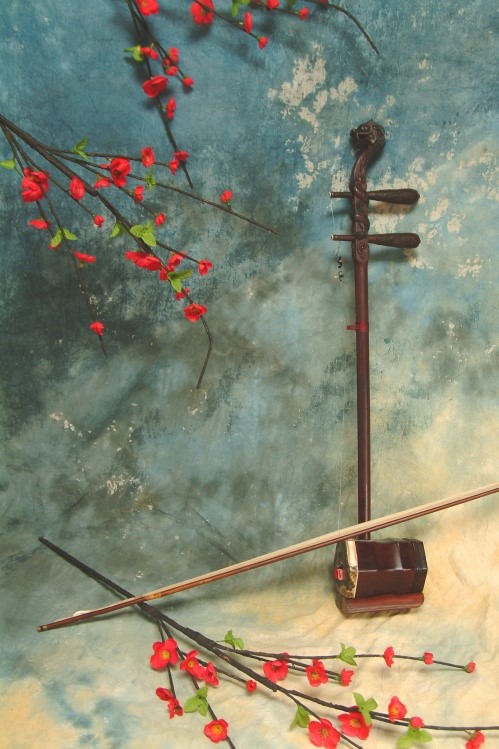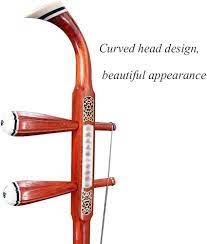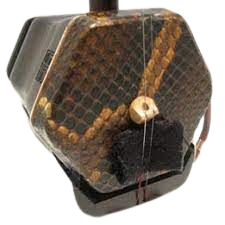What is an Erhu?

The erhu has a history that can be traced back in China for more than a thousand years. It probably evolved from the xiqin which is believed to have originated from the Xi people of Central Asia, and who came to China in the 10th century.
The first Chinese character of the name of the instrument (二, èr, two) is believed to come from the fact that it has two strings. Another explanation states that it comes from the fact that it is the second highest in pitch of the instruments in the huqin family of instruments in the modern Chinese orchestra. The second character (胡, hú) indicates that it is a member of the huqin family. The name huqin literally means “barbarian instrument”, showing that the instrument likely originated from regions to the north or west of China inhabited by non-Han peoples.
The erhu might be described as a two-string version of the western Violin. But with it’s snake skin covered resonator, it has a distinctly different tone. Other members of the huqin family include the ZhongHu (lower voice, like a viola) and the BanHu (very high pitched voice).



The neck of the erhu is in the shape of a long vertical stick. There are two tuning pegs on the top. At the bottom is a resonator covered in python skin on the front. Two strings extend from the peg to the base. A small loop of chord (qian jin) is wrapped around both the neck and the two strings. This pulls the strings toward the skin and hold a small wooden bridge in place. The Erhu is played with a bow that is captured between the two strings. There is no fingerboard.